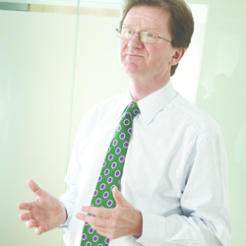Gareth Jones hears Sam Younger suggest again that changes to the way charities are classified may be necessary.
This week saw Russam GMS’s annual ‘Civil Society Evening’ held at the Lanesborough Hotel in London, where, between munching on the impressively plentiful supply of delicious canapés, attendees heard Charity Commission chief executive Sam Younger give his views on the future of the sector and the regulator.
Younger revisited several topics he had already expounded upon at the CFDG Annual Conference last week, but one of these is worth revisiting for the extra detail he provided.
It seems significant that, when asked whether the fundamentals of charity law are still right for a world where people are increasingly looking to blend social objectives with personal gain, he again raised the issue of whether more than one definition of charity is now needed.
While cautioning that it was only a thought at present, he said: “With all these more porous boundaries, I do think one of the things that would be useful in the review of the Charities Act is to look at whether a single definition of charity is actually fit-for-purpose in future, or whether we need to recognise there are a number of forms of activity, each of which are actually deserving of the kind of tax privileges that go with charity but actually are a bit different and might need to be badged differently.
“If the notion of charity broadens, there is the danger that it gets to the point of meaningless as a definition, so I think it is worth a look at what is the definition.”
“I do have slight worry that you could get to the point that such is the inability to distinguish between the commercial and the charity, or the public service delivery and the charitable, then why would I as a donor be giving money to an organisation that’s actually involved in commercial or government activity?”
Younger’s comments provide food for thought, and whet the appetite for the possibility that the forthcoming review of the Charities Act will contain some very interesting discussions on what makes a charity and how different types of charity should be viewed by society.
Food for thought: Younger’s views on regulating a changing sector
19 May 2011
Voices
Gareth Jones hears Sam Younger suggest again that changes to the way charities are classified may be necessary.








